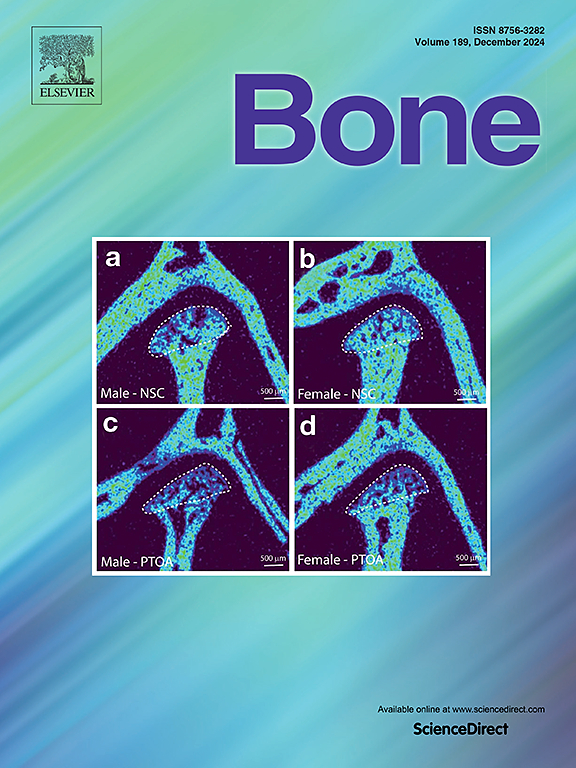类风湿关节炎骨髓间充质干细胞中nets诱导的成骨抑制机制
IF 3.5
2区 医学
Q2 ENDOCRINOLOGY & METABOLISM
引用次数: 0
摘要
在慢性炎症性风湿病领域,虽然中性粒细胞胞外陷阱(NETs)已被认为是类风湿关节炎(RA)发病机制的促进因素,但NETs与骨髓间充质干细胞(BMSCs)之间异常相互作用的潜在机制仍不清楚。我们的研究有几个关键发现。首先,我们发现RA患者骨髓间充质干细胞成骨分化能力降低。此外,我们发现RA患者中NETs的增加通过削弱骨髓间充质干细胞的成骨能力来破坏骨形成。具体来说,NETs激活骨髓间充质干细胞中的NF-κB通路,抑制骨形态发生蛋白2 (bone morphogenetic protein 2, BMP2)的表达,从而抑制成骨,这可以被NF-κB抑制剂抵消。此外,NETs促进骨髓间充质干细胞分泌白细胞介素-8 (IL-8),吸引更多的中性粒细胞进入骨髓。这些发现强调了nets诱导的p65/NF-κB通路激活在抑制RA BMSC成骨中的作用,并提示靶向p65可能是RA的潜在治疗策略。本文章由计算机程序翻译,如有差异,请以英文原文为准。
Mechanistic insights into NETs-induced osteogenesis inhibition in BMSCs of rheumatoid arthritis
In the field of chronic inflammatory rheumatism, while neutrophil extracellular traps (NETs) have been recognized as contributors to the pathogenesis of rheumatoid arthritis (RA), the underlying mechanism of the abnormal interaction between NETs and bone marrow mesenchymal stem cells (BMSCs) has remained unclear. Our study made several key findings. Firstly, we discovered that the osteogenic differentiation ability of BMSCs in RA patients was reduced. Additionally, we found that the increased production of NETs in RA patients impaired bone formation by weakening the osteogenic capacity of BMSCs. Specifically, NETs activated the NF-κB pathway in BMSCs, suppressing the expression of bone morphogenetic protein 2 (BMP2) and thus inhibiting osteogenesis, which could be counteracted by an NF - κB inhibitor. Moreover, NETs promoted BMSCs to secrete interleukin-8 (IL-8), attracting more neutrophils into the bone marrow. These findings highlight the role of NETs-induced activation of the p65/NF-κB pathway in inhibiting BMSC osteogenesis in RA and suggest that targeting p65 may be a potential therapeutic strategy for RA.
求助全文
通过发布文献求助,成功后即可免费获取论文全文。
去求助
来源期刊

Bone
医学-内分泌学与代谢
CiteScore
8.90
自引率
4.90%
发文量
264
审稿时长
30 days
期刊介绍:
BONE is an interdisciplinary forum for the rapid publication of original articles and reviews on basic, translational, and clinical aspects of bone and mineral metabolism. The Journal also encourages submissions related to interactions of bone with other organ systems, including cartilage, endocrine, muscle, fat, neural, vascular, gastrointestinal, hematopoietic, and immune systems. Particular attention is placed on the application of experimental studies to clinical practice.
 求助内容:
求助内容: 应助结果提醒方式:
应助结果提醒方式:


